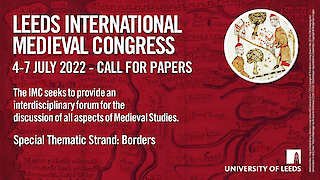Andrzej Wicher, Zakład Angielskiego Dramatu, Teatru i Filmu, Uniwersytet ŁódzkiTolkien privileges the West, and the North-West, among the cardinal points. He places the country of his hobbits in ‘the North-West of the Old World, east of the Sea’. The common language of the Free Peoples is called Westron, the language of the West, Elrond talks even about ‘the western world’. Their enemy, Sauron, is defined as a Shadow in the East, and his human supporters are called Easterlings. On the other hand, both the action of The Hobbit and The Lord of the Rings consists in an eastward movement, there the adventure and salvation lie. Unlike in the case of the North and South, there is a clear borderline between the East and the West, it is the Great River Anduin. The symbolism of the East and West seems different from that of the North and South, which I already dealt with, but no less important. The tentative conclusion of my argument would be that Tolkien’s privileging of the West is indissolubly and paradoxically connected with the persistent motif of the fall of the West.
Victoria Holtz Wodzak, Chair|Associate Professor, English and World Languages, Viterbo UniversityIn Tolkien’s letter 89, to Christopher, he writes of an ‘individual ray’ of light illuminating a single small dust mote, and says that that ray of light was ‘God’s very attention itself, personalised’. In his short story, ‘Leaf by Niggle’, Tolkien shows a similar attention to the individual and personal, although in Niggle’s case, as perhaps in Tolkien’s, this recognition of the individual seems to impede the completion of his work. Even after Niggle dies, he is shown transfixed by an individual golden flower, or the turn of a leaf. What Tolkien notes in these instances is what Duns Scotus terms their ‘haeccitas’, a God-given individuality that differentiates one individual from another. It is common to read Tolkien’s work through a fairly conventional religious or Platonic interpretive lens — and that view is clearly there in Tolkien’s work. What is less common, and what I propose to do, is to examine to what extent Scotus’ ‘haeccitas’ provides a useful interpretive lens for particular aspects of Tolkien’s work. Doing so places his work in conversation with both the medieval nominalist/realist debate and with the work of Tolkien’s near-contemporary, poet Gerard Manley Hopkins.
Andrew Higgins, independent scholarAlmost immediately after the first volume of The Lord of the Rings was published in July 1954, J.R.R. Tolkien started to receive letters from readers asking a myriad of questions about his world-building of Middle-earth. In this paper I will explore how Tolkien’s ‘author response’ to early readers actually resulted in the invention and shaping of new elements of his Elvish languages which would go on to appear in Tolkien’s planned index for The Lord of the Rings which was published in 2007 as Words, Phrases and Passages in ‘The Lord of the Rings’ in Parma Eldalamberon 17. This paper will explore several examples of how questions from early readers actually resulted in the invention of new words, phrases, and grammatical structures in Tolkien’s invented languages inextricably linked to his myth-making and world-building.
